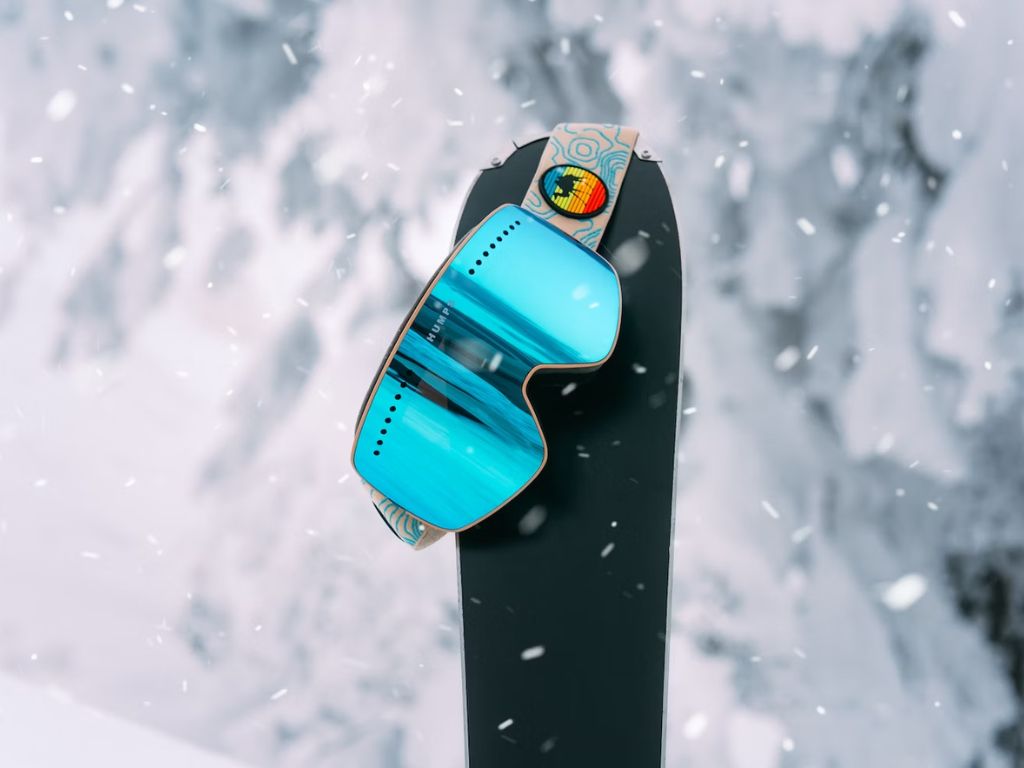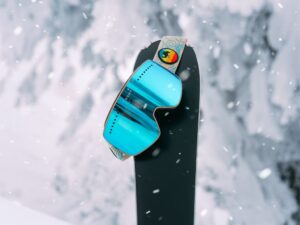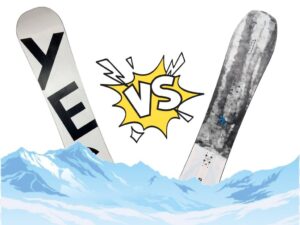Today, I’m stoked to dive into a topic that every snowboarder ponders at some point:
Reasonable (or Cheap) vs. Expensive Snowboards: Which one’s more worth your money? If there’s one thing I’ve learned during my decade-long love affair with snowboarding is that having the right gear can make all the difference.
We all want to catch those epic powder runs and show off our coolest tricks, but the choice of snowboard can shape our mountain adventures.
If you’re in a lot of hurry and don’t want to get in the nitty-gritty of things, here’s a quick answer:
Generally, mid-range or cheaper snowboards are most suitable for beginners and recreational snowboards because of your skill level and terrain preference. In comparison, pro riders can certainly benefit from high-end boards with all their special features.
For those who are left, before we begin with the differences, let me just give you a quick overview of the price ranges when shopping for snowboards.
| Price Range | Average Price |
| Cheap Snowboards | $200 – $400 |
| Mid-Range | $400 – $700 |
| Expensive | $700 and above |
Cheap Snowboards typically come with simpler designs and may use less expensive materials to decrease costs. However, these hidden gems can provide a solid performance without breaking the bank.
Mid-Range Snowboards often boast a mix of decent-quality materials and technology at a reasonable cost. Mid-range boards are popular for intermediate or casual riders looking to upgrade their gear.
Expensive Snowboards are the cream of the crop! High-end snowboards come with all the bells and whistles, engineered with top-notch materials and cutting-edge technologies.
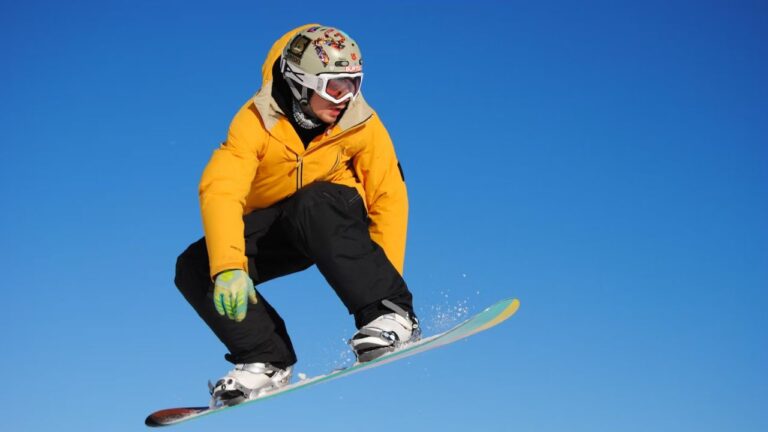
What factors affect snowboard prices so much?
Now that we’ve grasped the price categories, let’s dive into what makes a snowboard’s price tag tick.
1. Materials and Construction: High-end snowboards often use premium materials, such as carbon fiber or advanced composites, which enhance their performance and durability.
Naturally, these materials come at a higher cost. In comparison, cheaper snowboards may utilize basic materials like wood cores and standard base materials.
2. Specialization: Snowboards designed for specific terrains or riding styles, like freestyle or powder boards, may come at a premium price due to their specialized features and tailored performance enhancements.
3. Brand Name: Like many products, brand reputation can influence the price of a snowboard. Established and renowned brands often come with a premium cost, but they also offer reliability and customer support that some riders find worth the extra investment. Examples include Burton, Never Summer, Lib Tech, and many more.
4. Performance: High-performance snowboards designed for advanced riders or competitive use tend to have a higher price tag. These boards are engineered to deliver exceptional control, responsiveness, and speed.
5. Flex and Weight: High-end snowboards are often designed with specific flex patterns to cater to different riding styles. Lighter materials reduce weight and enhance maneuverability, contributing to the board’s overall cost.
6. Durability: A snowboard’s ability to withstand the rigors of intense riding impacts its longevity. Boards built with durability in mind might feature reinforced edges or high-quality base materials, driving up their cost.
However, this is closely linked to brand name and production quality. Some reasonably-price snowboards from reliable brands may be more durable than some expensive boards from a random brand.
Now that we’ve cracked the code on snowboard pricing, you’ll be equipped to decide when to choose your perfect ride. So, let’s gear up and carve into the exciting details of cheap and expensive snowboards!
Cheap Snowboards: Pros and Cons
Regarding budget-friendly snowboards, there’s much more to them than just their price tag.
I. Advantages
1. Affordable Entry Point: For beginners or riders on a tight budget, these options offer an accessible entry point into snowboarding.
2. Ideal for Beginners: These boards are forgiving and easier to handle, helping you build confidence and improve your skills as you navigate the slopes.
3. Experimentation and Learning: You get to experiment with different riding styles and terrain without the fear of damaging an expensive investment.
4. Casual and Recreational Use: It’s a great fit if you’re not a hardcore shredder and just want to enjoy leisurely rides with friends or family.
5. Backup or Beater Board: Seasoned riders often keep a cheap snowboard as a backup or “beater” board for rough conditions or terrain. It’s a practical approach to preserve your expensive main board and extend its lifespan.
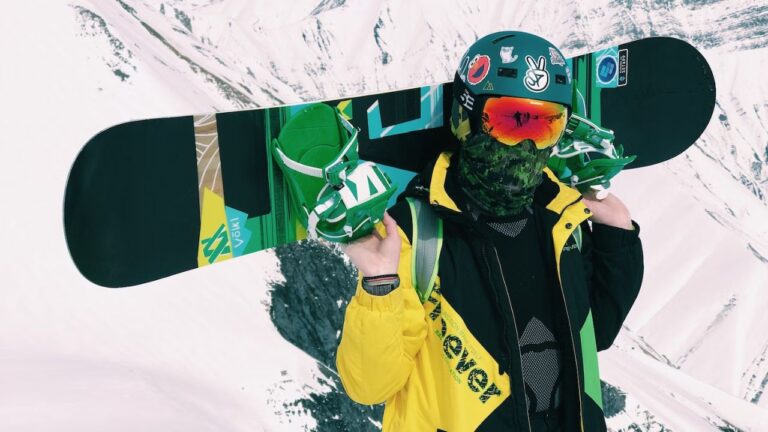
II. Disadvantages
1. Lower-Quality Materials: While they may be sufficient for beginners, they can decrease performance and durability over time.
2. Limited Technology and Features: Budget options have fewer specialized features than expensive snowboards. This can affect your overall riding experience and limit your progression as a rider.
3. Performance Limitations: Cheap snowboards may need more responsiveness and precision for advanced maneuvers or high-speed runs.
4. Shorter Lifespan: Frequent riders might need to replace their budget boards sooner.
5. Reduced Resale Value: If you decide to upgrade or switch to a different board, cheap snowboards often have lower resale value in the second-hand market.
III. Who should purchase cheap snowboards?
Generally, cheap snowboards are the most ideal for beginners and recreational riders. Novice and casual riders can easily learn the fundamentals of snowboarding on these boards due to their forgiveness without worrying about damaging a prized investment.
High-end snowboards, like full-camber advanced models, can be unforgiving for beginners, making the learning curve more challenging.
On the other hand, learning on a higher-end snowboard can have its benefits. It encourages the development of proper technique from the start, as the board’s responsiveness demands more precision and rewards good form.
Expensive Snowboards: Pros and Cons
Now, let’s venture into high-end snowboards, where the price is premium, but the performance promises to be unparalleled.
I. Advantages
1. Top-Notch Materials and Construction: The allure of expensive snowboards lies in their superior craftsmanship and high-quality materials. These boards are built to withstand rigorous conditions and deliver unmatched performance.
2. Enhanced Performance: They excel in various terrains and weather conditions, making them a top choice for seasoned riders and enthusiasts.
3, Longevity and Durability: Their durability ensures they can withstand frequent use and abuse, giving you many seasons of shredding without losing their edge.
4. Specialized Features: High-end snowboards often have specialized features tailored to riding styles or terrain. From powder-specific designs to park-oriented setups, these boards cater to the needs of demanding riders.
5. Confidence-Boosting: Knowing you’re equipped with the best gear can elevate your riding experience and help you push your limits.

II. Disadvantages
1. Hefty Price Tag: Let’s face it; the cost is the most apparent drawback of expensive snowboards.
2. Not Ideal for Beginners: There are better choices than expensive snowboards for beginners who are still honing their snowboarding skills. The advanced performance features may be overwhelming and could hinder their progression.
3. Maintenance Costs: High-quality materials require proper care and occasional servicing, adding to the overall cost of ownership.
4. Limited Accessibility: Not all riders can access high-end snowboards, especially in rental shops or local stores. Their exclusivity can limit the options available to try before making a purchase.
5. Risk of Theft or Damage: Riding an expensive snowboard can come with a higher risk of theft or damage, which can be disheartening after investing a substantial amount. Taking extra precautions becomes essential to safeguard your investment.
Who should invest in an expensive snowboard?
Expensive high-end snowboards are worth buying for experienced riders and performance enthusiasts seeking top-tier performance and unrivaled riding experiences. They’re crafted with premium materials, such as carbon fiber, that enhance responsiveness and durability.
If you don’t belong to those categories, remember that better choices are available tailored to your needs. A well-designed, affordable snowboard from a lesser-known brand, constructed with decent materials, can perform admirably.
Investing in an expensive snowboard depends on skill level, riding style, and budget constraints. While higher-end snowboards can elevate your performance and enjoyment, finding the right balance between quality and affordability is essential.
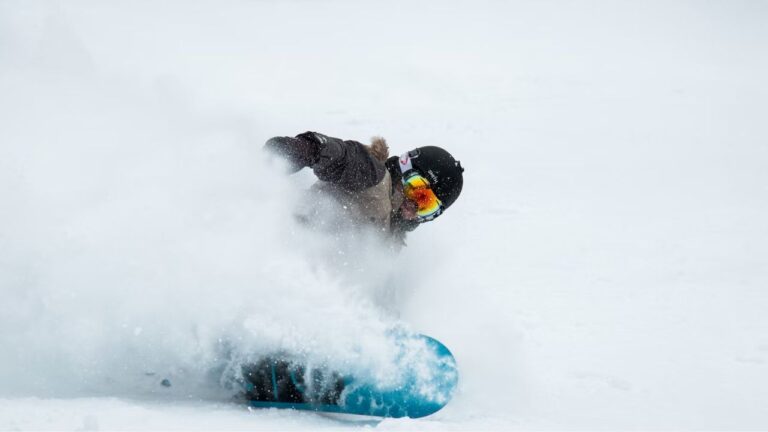
What features to look for in an expensive snowboard?
Several key features can significantly impact your riding experience when considering an expensive snowboard.
First and foremost, pay attention to the snowboard’s construction and materials. High-end boards often use premium materials like carbon fiber or specialized blends, enhancing their performance and durability.
Advanced technologies, such as advanced camber profiles or asymmetric shapes, can elevate your riding. Consider the board’s intended use and terrain suitability. Some high-end models are tailored for specific riding styles, like freestyle or powder riding.
Moreover, examine the flex and weight of the snowboard to ensure it matches your preferences and skill level. Lastly, reputable brands known for their high-quality snowboards may offer added peace of mind.
Expert QnA
Q. Is investing in an expensive snowboard worth it if I'm a beginner?
As a beginner, investing in an expensive snowboard requires careful consideration. While they often come with premium materials and advanced technologies, there may be better choices for novice riders who need to hone their skills and fundamentals before investing.
Q. Are cheap snowboards suitable for advanced riders?
Generally, cheap snowboards aren’t suitable for advanced riders seeking top-notch performance and precision. Cheap snowboards typically use basic materials and construction techniques, which can limit their responsiveness and durability under demanding conditions.
Q. How long can I expect an expensive snowboard to last compared to a cheap one?
Generally, an expensive snowboard, built with high-quality materials and advanced construction techniques, can last significantly longer than a cheap one. On average, a cheap snowboard may last around 50 to 100 days of riding, whereas an expensive snowboard can last 150 to 200 days.
The lifespan of a snowboard can vary depending on factors such as usage, maintenance, and build quality.
Q. Are expensive snowboards only for professionals and experts?
Generally speaking, expensive snowboards are not exclusively reserved for professionals and experts. Even though beginners may still need to fully utilize their capabilities at the early stages, investing in a high-end board can help them progress faster.

